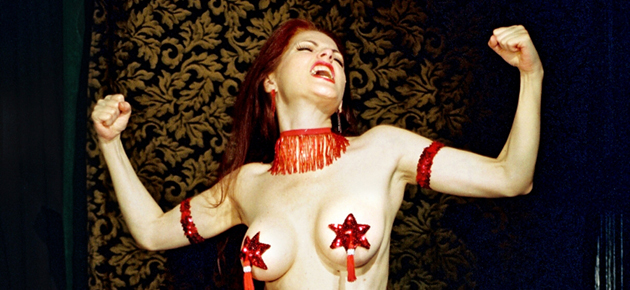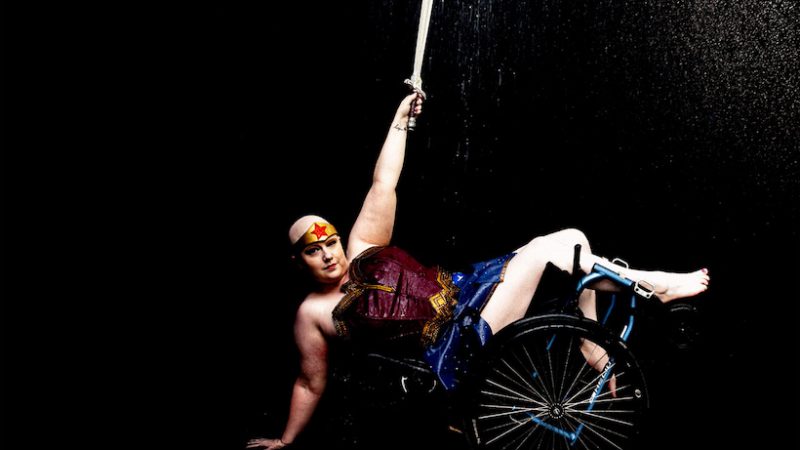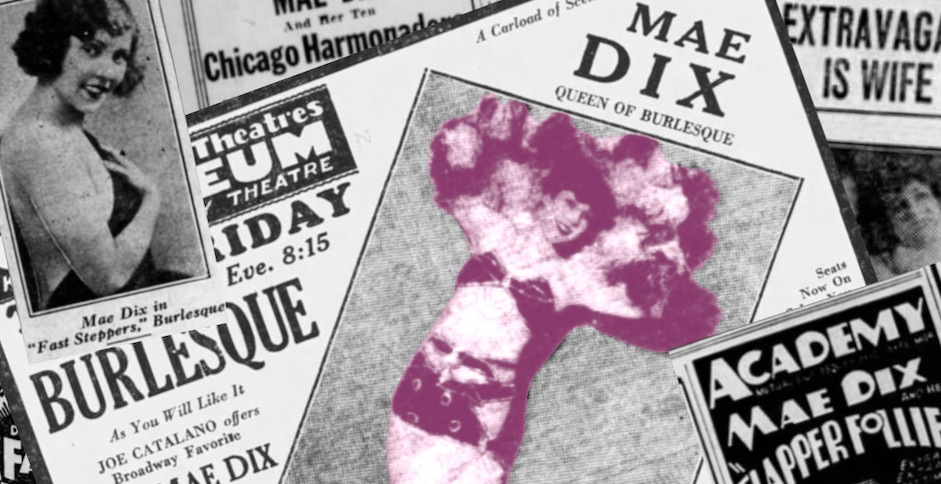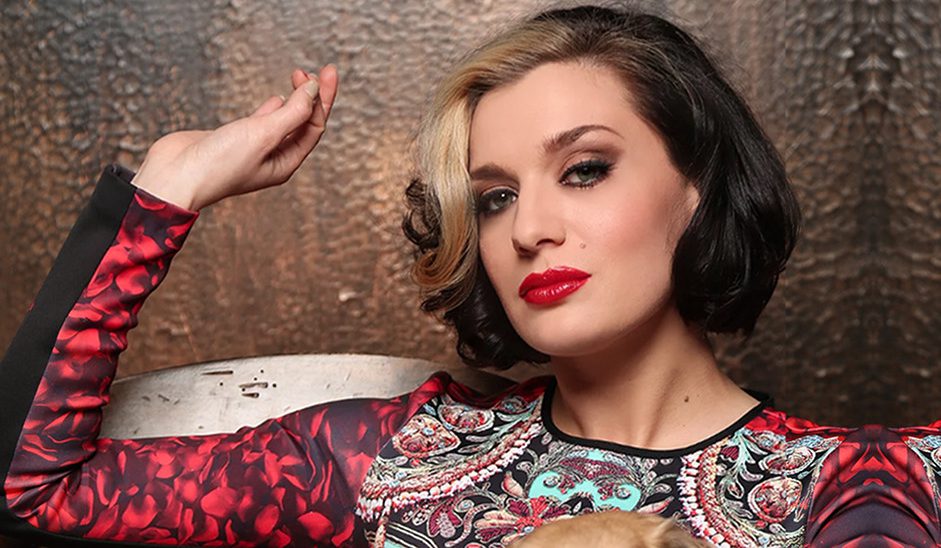Jo Weldon: “Stripper isn’t an insult”!

Interview with Jo Weldon, the Headmistress and Founder of the New York School of Burlesque, author of The Burlesque Handbook and one of the most recognized burlesque instructors in the world.
Interview by Mitzi Von Wolfgang, founder and director of the Burlesque School Milano.
We know that you are the founder and a headmistress of New York School of Burlesque, as well as one of the most important personalities in the Burlesque community. You were famous in the entertainment industry even before you step on the Burlesque stage – how did it happened?
I was not famous, exactly, but I had been a well-known centerfold and dominatrix, as well as a published writer, activist, and public speaker on stripping and on the sex industry.
I had been a performer since the 1970s when I was still in school, and had done burlesque routines in strip joints, but it wasn’t until about 1997 when I met Whitney Ward and Bambi the Mermaid that I was introduced to Coney Island burlesque, The Blue Angel, The VaVaVoom Room, and the Slipper Room style of neo-burlesque.
You are known as the world’s major authority in striptease. Could you explain the difference between burlesque striptease and strip-joint clubs? Which are, instead, the common points?
Burlesque striptease is usually intended as part of a floor show or stage show in which the performer is presenting a theatrical number. Strip joints are more about relating to customers one on one, and in most strip joints the stage show is not where the dancers make their money. Burlesque is aimed at the entire audience, strip joint stripping at individuals. In most strip joints the customers come in when they like and leave when they like.
In burlesque shows most audience members come to see the show at an appointed time. And strip joint audiences are mostly men, whereas burlesque audiences are mixed. The common point is that both types of performer rely on themselves and their bodies to get express themselves and perform, rather than on other stage performers and stage sets. Strip joint strippers usually spend most of their time socializing with customers, while burlesque performers are usually too busy for that.
Burlesque Legends of the “Golden Age” often call themselves – “strippers”. What is the position of the “Neo-Burlesque” performers in this respect? And your own?
I think performers have to stay in their own comfort zones with this. I consider myself a stripper because I take off my clothes. I also now consider myself a striptease artist because I’ve studied how to strip theatrically and added layers to my performances. If someone means to insult me by calling me a stripper I will think they’re rude, but I won’t actually be insulted. I’m a stripper. When I worked in strip joints I considered myself a sex worker and I was not ashamed of that, because I worked hard, did my best to be ethical, and took care of myself.
How the genre evolved from the very beginnings to now-a-days?
The striptease artist is an innovation less than a century old. Before that there was nudity onstage, and novelty acts such as the Dance of the Seven Veils, but there was not a category of performer known as the Stripteaser. She has come into her own and we should embrace her!
I am interested in the strip itself, even more than the beautiful costumes and wild ideas. I love the idea of a single person alone on a stage taking command of a room simply by revealing her fingers slipping out of a glove. I can watch it a hundred times a day and still be dazzled by the glamour of flesh revealing itself.

Your advices and tips – the main “to do” or “do not’s” to a young burlesque performer in matter of striptease.
The main Do’s:
- Cut the tags out of your bras, gloves, and everything else.
- If you want to raise the bar on your performances, ask people for critiques, and consider carefully what they say before you accept or reject it.
- Wear more makeup and jewelry than you would at a party, so it shows up from the stage.
- Think about what the audience can see and show them what you’re doing.
- Whatever else you do, strut! Practice a beautiful confident walk, and start using it before you even step on the stage, and use it when you’re walking away from the stage.
The main Don’ts:
- Don’t be high-maintenance. Everyone is working hard.
- Don’t copy other folks’ gimmicks. It’s not right to accept applause for someone else’s idea.
- Don’t fade out at the end of the song. Finish your number onstage with a flourish and let the audience applaud for you.
- Don’t ask for or offer criticism during a show. Everybody is full of adrenaline at that time.
- Don’t apologize for what you like, whether it’s classic showgirl style burlesque, nerdlesque, performance art, or jazz dance in frilly panties. Do what you love and seek the right place for you, and if you can’t find that lace, then make it!
Some tips to the ladies wishing only to create an intimate “private show” for their partner.
- Choose music you both love.
- Use your hands on your body to show how much you love your body and to make your patner think about the sense of touch. Gently slide your hands up your sides, touch your arms and hair.
- Come close enough to let them smell your soap or perfume, and lean close to their ear to let them hear you breathe for a second.
- Let them giggle if they get nervous or shy. Giggling is fine!
- As you perform for them, occasionally undo one of their buttons or their zipper. Let them feel helpless.
- Always finish with trust for the rhythm between you and your partner. No need to hold out once you know they’re ready for you!







